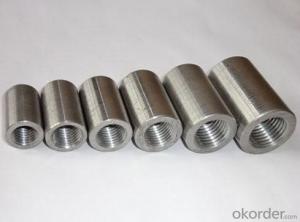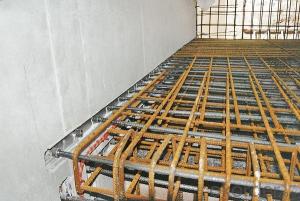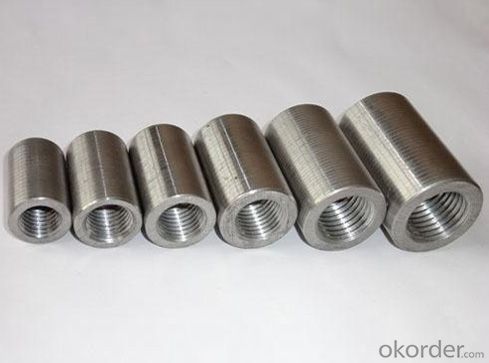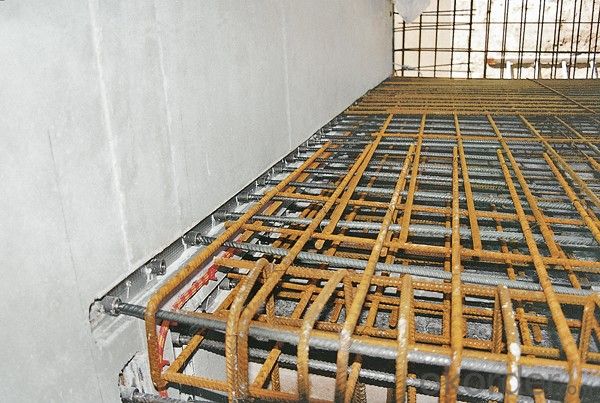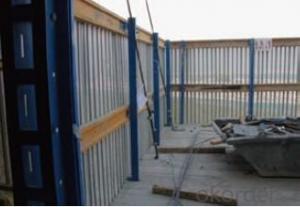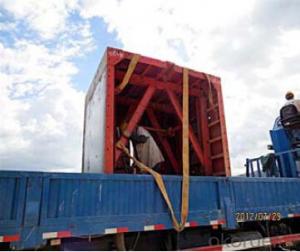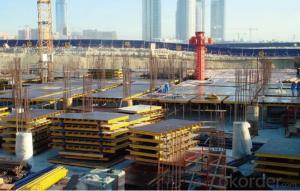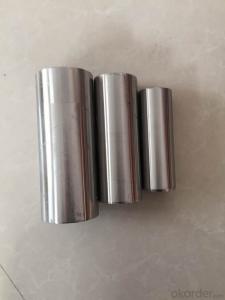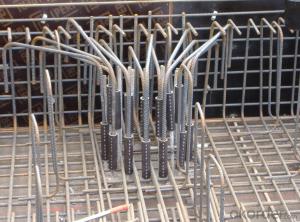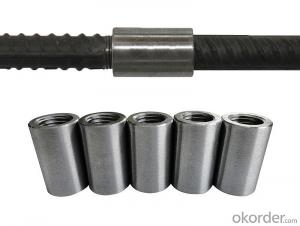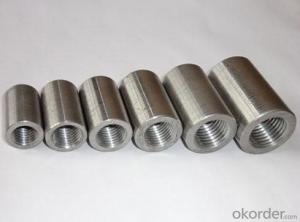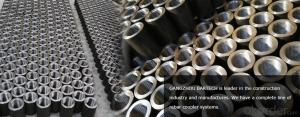Steel Coupler Rebar Ringlock Scaffolding System Rosette Scaffolding Low Price
- Loading Port:
- Shanghai
- Payment Terms:
- TT OR LC
- Min Order Qty:
- 1000 pc
- Supply Capability:
- 10000000 pc/month
OKorder Service Pledge
OKorder Financial Service
You Might Also Like
Steel Coupler Rebar Ringlock Scaffolding System Rosette Scaffolding Low Price
1.Description:
Lapped joints are not always an appropriate means of connecting rebar. The use of Steel Rebar Couplers can simplify the design and construction of reinforced concrete and reduce the amount of reinforcement required.
The threaded steel coupler system is designed as a threaded reinforcement connection with 100% load transmission. The steel coupler rebar connection system is suitable for both static and dynamic load transmission in construction joints.
The coupler is designed as a threaded reinforcement connection for formed construction joints. Reinforcement work is normally carried out on both sides of the construction joint using lap joints or one side is anchored. The bar lengths are based on the structural analysis requirements of the building component and are calculated from anchorage and lap lengths.
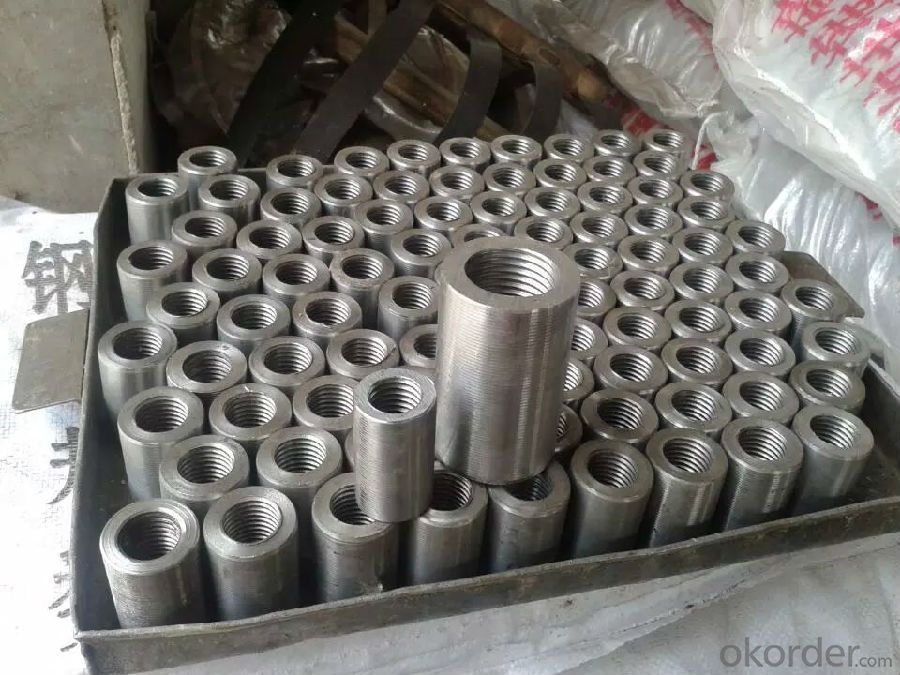
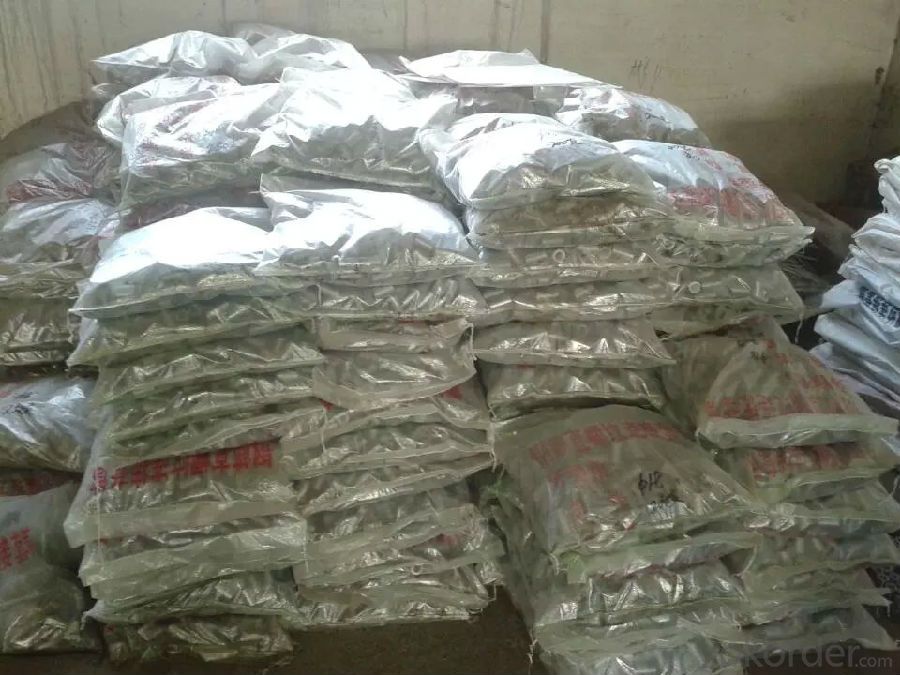
2.Advantages of Steel Coupler Rebar Lift Scaffolding Galvanized Scaffolding Tube with Low Price:
The coupler system provides the opportunity to connect rebars quickly, easily and cost effectively, even when large rebar diameters are used. This makes the steel coupler rebar range a logical extension to our rebendable CNBM reinforcement continuity system for rebars over 12 mm.
3.Available sizes of Steel Coupler Rebar Lift Scaffolding Galvanized Scaffolding Tube with Low Price:
14mm,16mm,18mm,20mm,22mmm,25mm,28mm,32mm,36mm,40mm
4.Delivery:
Delivery Term: FOB / CFR / CIF available.
Delivery Time: 15 days or less after order confirmed.
5.Why choose us?
Technical Expertise
Experienced Management
Stringent Quality Control
Exemplary Service
On-Time Delivery
Wide Product Range
Competitive Pricing
Huge branch network capable of catering worldwide
- Q: Can steel formwork be used for curved or irregular structures?
- Yes, steel formwork can be used for curved or irregular structures. Steel formwork is highly flexible and can be easily shaped or modified to accommodate various curves and irregular shapes. It offers excellent strength and durability, making it suitable for complex structures that require precise and customized formwork solutions.
- Q: What are the different types of safety systems used with steel formwork?
- Steel formwork commonly utilizes various safety systems to ensure worker safety and prevent accidents on construction sites. Some frequently employed safety systems for steel formwork comprise: 1. Guardrails: These are often positioned along the edges of the formwork to avert workers from slipping or falling. Constructed from steel or aluminum, they possess the capacity to withstand a specific amount of force. 2. Safety harnesses: Workers wear safety harnesses, which are fastened to a secure anchor point to prevent falls. These harnesses are typically adjustable to accommodate different body sizes and are crafted from robust, enduring materials. 3. Toe boards: Positioned at the bottom of the formwork, toe boards prevent the dislodgement of tools, materials, or debris from the structure. Usually made of plywood or steel, these boards are firmly affixed to the formwork. 4. Safety nets: Installed beneath the formwork, safety nets are capable of catching falling objects or workers in the event of an accident. Comprised of sturdy, flexible materials, they possess the ability to absorb the impact of a fall. 5. Ladders and stairs: Employed to facilitate secure access to and from the formwork, ladders and stairs are typically constructed from steel or aluminum, ensuring stability and durability. 6. Warning signs and barricades: Warning signs and barricades operate as cautionary measures, alerting workers and visitors to potential hazards and restricted areas. These items are usually manufactured using durable materials and are brightly colored for enhanced visibility. 7. Personal protective equipment (PPE): PPE, including hard hats, safety glasses, and steel-toed boots, is a vital safety system employed in conjunction with steel formwork. These protective measures are designed to safeguard workers against head injuries, eye injuries, and foot injuries. It is important to acknowledge that the selection of specific safety systems for steel formwork may vary depending on project requirements and regulations. Construction companies and workers must meticulously adhere to all safety guidelines and regulations to establish a secure working environment.
- Q: Can steel formwork be used for projects with limited formwork budget?
- Yes, steel formwork can be used for projects with limited formwork budget. Steel formwork is durable, reusable, and has a longer lifespan compared to other types of formwork. It requires less maintenance and can be used for multiple projects, making it a cost-effective option in the long run. Additionally, steel formwork provides better quality finishes and allows for faster construction, reducing labor costs and overall project duration.
- Q: Can steel formwork be used for both interior and exterior concrete finishes?
- Yes, steel formwork can be used for both interior and exterior concrete finishes. Steel formwork is known for its strength and durability, making it suitable for a variety of applications. Whether it is for interior walls, columns, or exterior slabs, steel formwork provides a smooth and consistent surface for the concrete to be poured into. Additionally, steel formwork can be easily customized and adjusted to meet specific project requirements, making it a versatile choice for both interior and exterior concrete finishes.
- Q: What are the different finishes that can be achieved with steel formwork?
- The desired aesthetic and functional requirements of a project determine the various finishes that can be achieved with steel formwork. 1. To achieve a clean and seamless appearance, smooth surfaces can be created with steel formwork. This finish is commonly preferred for architectural applications and high-end buildings. 2. Textured finishes can be achieved by incorporating patterns, designs, or textures onto the steel formwork or using form liners. These finishes add visual interest and can mimic natural materials like stone, wood, or brick. 3. Exposing the aggregate in the concrete surface creates a rough and textured appearance, showcasing the natural beauty of the aggregates. This finish is often used decoratively in applications like sidewalks, driveways, and patios. 4. By using rubber stamps with steel formwork, stamped finishes with intricate patterns and designs like brick, tile, or stone imprints can be created. These finishes are commonly used to add decorative elements to concrete floors, walls, or pavements. 5. A polished finish can be achieved by grinding and polishing the concrete surface, resulting in a smooth, glossy, and reflective surface. This finish is commonly used in commercial and residential buildings, as well as in high-traffic areas that require durability and low maintenance. In summary, steel formwork offers a versatile and flexible solution for achieving different finishes in concrete construction. The choice of finish depends on specific design requirements, project goals, and desired aesthetic outcomes.
- Q: How does steel formwork contribute to the overall structural stability of the building?
- Steel formwork is a crucial element in the construction industry and plays a significant role in ensuring the overall structural stability of a building. It contributes to the stability of the structure in several ways. Firstly, steel formwork provides a rigid framework for pouring concrete, which allows for the accurate shaping and alignment of structural elements such as columns, beams, slabs, and walls. This precision and control in the forming process ensure that the concrete cures in the desired shape, thereby creating a strong and stable structure. Furthermore, steel formwork offers excellent strength and durability. It can withstand high loads and pressures during the pouring and compacting of concrete, ensuring that the structure remains intact and structurally sound. Steel formwork is known for its ability to resist deformation and maintain its shape, preventing any potential structural failures. Another significant advantage of steel formwork is its ability to provide support to the concrete during the curing process. As the concrete hardens, it undergoes a chemical reaction known as hydration, which creates heat. Steel formwork effectively dissipates this heat, allowing the concrete to cure uniformly and reducing the risk of thermal cracking. By preventing cracks in the structure, steel formwork enhances the overall stability and longevity of the building. Moreover, steel formwork is highly versatile and can be easily modified and reused for multiple construction projects. This adaptability allows for efficient and cost-effective construction processes, as the same formwork can be used for different structural elements. This not only saves time and resources but also ensures consistency in the quality and stability of the building. In summary, steel formwork is essential for the overall structural stability of a building. Its accurate shaping, strength, support during curing, and versatility contribute to creating a robust and durable structure. With its ability to withstand high loads and maintain shape, steel formwork plays a vital role in ensuring the safety and stability of buildings in the construction industry.
- Q: Can steel formwork be used for precast concrete elements?
- Indeed, precast concrete elements can be constructed using steel formwork. The utilization of steel formwork in precast concrete fabrication is widely favored due to its robustness and ability to be reused. It creates a sturdy and inflexible framework capable of withstanding the force exerted by liquid concrete during casting and the load of solidified concrete after curing. Moreover, steel formwork guarantees a uniform and polished appearance for the precast elements, ensuring impeccable and accurate outcomes. Furthermore, the assembly and disassembly of steel formwork is effortless, enabling efficient manufacturing and convenient transportation of precast elements.
- Q: What are the different types of steel formwork ties and connectors?
- There are various types of steel formwork ties and connectors used in construction projects. Some common types include loop ties, flat ties, wedge bolts, formwork clamps, and snap ties. These ties and connectors are used to secure the formwork panels together, ensuring stability and alignment during the concrete pouring process.
- Q: Can steel formwork be used for residential tower construction projects?
- Yes, steel formwork can be used for residential tower construction projects. Steel formwork is highly durable, versatile, and has a high load-bearing capacity, making it suitable for constructing tall structures like residential towers. Additionally, steel formwork provides excellent dimensional accuracy and can be easily customized to meet the specific design requirements of residential towers.
- Q: How does steel formwork affect the concrete curing process?
- Steel formwork is commonly used in construction projects to provide temporary molds for pouring concrete. The presence of steel formwork can have a significant impact on the concrete curing process. Firstly, steel formwork offers a smooth and rigid surface, which allows for better control over the shape and dimensions of the concrete structure. This ensures that the concrete is poured evenly and uniformly, leading to a more consistent curing process. The smooth surface of steel formwork also helps in achieving a better finish of the concrete surface. Secondly, steel formwork provides stability and support to the concrete during the curing process. It prevents the concrete from sagging or deforming under its own weight, especially in the case of vertical or overhead structures. This support allows the concrete to cure properly without any distortions or cracks, resulting in a structurally sound and durable final product. Moreover, steel formwork acts as a barrier, preventing the loss of moisture from the concrete during the curing process. Adequate moisture is crucial for proper hydration of cement particles, which is essential for achieving the desired strength and durability of the concrete. The presence of steel formwork helps to retain moisture and create a favorable environment for the curing process, reducing the risk of shrinkage and cracking. Furthermore, steel formwork can also influence the curing time of the concrete. Due to its high thermal conductivity, steel formwork can facilitate the dissipation of heat from the concrete, thus accelerating the curing process. This can be advantageous in certain situations where faster curing is desired, such as in cold weather conditions or time-sensitive construction projects. In summary, steel formwork plays a crucial role in the concrete curing process by providing a smooth surface, stability, moisture retention, and influencing the curing time. Its presence ensures a consistent and high-quality curing process, leading to a durable and well-finished concrete structure.
Send your message to us
Steel Coupler Rebar Ringlock Scaffolding System Rosette Scaffolding Low Price
- Loading Port:
- Shanghai
- Payment Terms:
- TT OR LC
- Min Order Qty:
- 1000 pc
- Supply Capability:
- 10000000 pc/month
OKorder Service Pledge
OKorder Financial Service
Similar products
Hot products
Hot Searches
